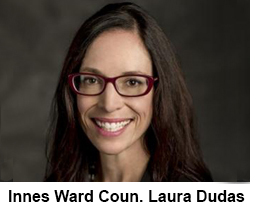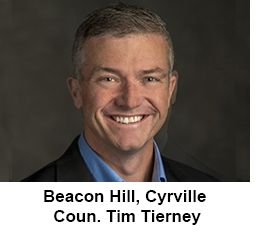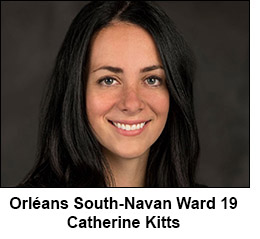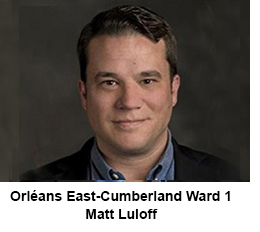Purchase of new landfill site a necessary move
Ottawa’s Trail Road Landfill will likely reach capacity by 2035, leaving the City with a waste crisis less than a decade away. As staff explore waste-to-energy and incineration, Ottawa will still need a new landfill, as even with incineration, 23 per cent of waste remains as ash that requires disposal in a landfill.
 However, opening a new landfill is no simple task. If the City identified a potential new site today, it would face years or decades of environmental assessments and provincial approvals, with no guarantee of success. In the past 20 years, only one single property in Ontario has been approved.
However, opening a new landfill is no simple task. If the City identified a potential new site today, it would face years or decades of environmental assessments and provincial approvals, with no guarantee of success. In the past 20 years, only one single property in Ontario has been approved.
That site is the Capital Region Resource Recovery Centre (CRRRC), near Boundary Road and Hwy. 417. This private landfill has been approved for 30 years, and offers advanced processing capabilities, including composting, anaerobic digestion and resource recovery. The only question now is ownership, as the City considers acquiring the site.
The stakes are high. If Ottawa cannot manage its own waste, we will have to pay other cities or private landfills at steep costs. Already, starting next year, Ottawa will be sending 60,000 tonnes of waste to private landfills.
Toronto faced this in the 1990s when its Keele Valley Landfill closed. Disposal costs soared from $15–$20 per tonne to over $50 as garbage was trucked to Michigan, a 300% increase that lasted until 2010. Today, costs would assuredly be far higher. Ultimately, Toronto was forced to buy the private Green Lane Landfill near London, and still trucks garbage 200 km down Highway 401.
Ottawa has a history of deferring tough infrastructure decisions, but a delay now will almost assuredly mean a very costly scramble later. A landfill or a waste processing facility may not be glamorous, but purchasing CRRRC is a rare chance to secure Ottawa’s waste future. Without it, all residents will have to pay substantially more, as we compete with others for a place to put our garbage.
Keeping our roads and sidewalks safe for all in wintery conditions
Here we go again. The leaves have wrapped up their fall finale, pumpkin spice season is fading away, and that early morning chill is becoming a regular guest. Winter isn’t officially here yet, but the snow has started making its first appearances, and in Ottawa – that’s our signal to get ready. As those early flakes fall, the City is already preparing to keep roads, sidewalks and neighbourhoods safe.
 This is also the time when winter weather parking bans start popping back into con-versation. They’re not the highlight of anyone’s season, but they matter. When Environment Canada forecasts seven centimetres of snow, or even suggests we might hit that amount, the City may call a parking ban. Fewer cars on the street mean crews can clear snow faster and more safely. Residential parking permit holders are usually exempt unless temporary signs go up, and some business areas remain exempt so people can still support local shops.
This is also the time when winter weather parking bans start popping back into con-versation. They’re not the highlight of anyone’s season, but they matter. When Environment Canada forecasts seven centimetres of snow, or even suggests we might hit that amount, the City may call a parking ban. Fewer cars on the street mean crews can clear snow faster and more safely. Residential parking permit holders are usually exempt unless temporary signs go up, and some business areas remain exempt so people can still support local shops.
The City also tries to give plenty of notice. Overnight bans, from 7 p.m. to 7 a.m, are announced by 9 a.m. Daytime bans, from 10 a.m. to 7 p.m., are announced by 3:30 pm the day before, unless the weather turns extreme.
If you’re unsure where to park during a ban, there are designated lots across Ottawa. Signing up for winter parking e-alerts or checking the Ottawa app is the easiest way to stay ahead of sudden weather changes.
Early snow can also bring its own challenges. When the forecast calls for truly hazardous conditions – ice, heavy snow, or anything that could overwhelm operations – the City may declare a Significant Weather Event. This doesn’t slow crews down; it simply shifts the focus to safety and gives everyone more time to work. If you can avoid travelling during these moments, it’s the safest choice. If you do need to head out, take it slow, stay alert, and give yourself extra time.
The snow may only be getting started, but staying safe as it returns is something we can handle – together.
When development damages roads, taxpayers shouldn’t pay the price
This term, I have been working on practical ways to better protect our roads from the impact of heavy construction traffic. Earlier this year, I submitted an inquiry to City staff asking what tools exist to manage and recover the costs of road damage caused by heavy vehicles hauling fill and materials to and from construction sites.
 My concern goes beyond this single policy. If the federal government and other major employers follow suit with full-time in-office standards, I believe our already strained transportation system, especially in Orléans South, will be pushed beyond its limits. For years, I’ve been sounding the alarm that the pace of suburban development is far outstripping investment in transportation infrastructure. Without a stronger plan, we risk walking straight into a commuting disaster we should have seen coming.
My concern goes beyond this single policy. If the federal government and other major employers follow suit with full-time in-office standards, I believe our already strained transportation system, especially in Orléans South, will be pushed beyond its limits. For years, I’ve been sounding the alarm that the pace of suburban development is far outstripping investment in transportation infrastructure. Without a stronger plan, we risk walking straight into a commuting disaster we should have seen coming.
The findings of the inquiry have con-firmed what many of us already know: while Ottawa has several by-laws regulating truck routes, load restrictions and oversized loads, there are major gaps when it comes to enforcement and cost recovery.
In many cases, road damage occurs before a development is formally approved, mean-ing there are no securities in place to hold anyone accountable. That leaves residents paying for premature road repairs through the already limited annual rehabilitation budget.
With about one-fifth of the city’s new homes being built in Orléans-South, these issues are becoming increasingly visible. Roads like Renaud, Navan, Frank Kenny and Milton see years of hauling traffic tied to multiple developments, well before homes go up.
At the November public works and infrastructure committee meeting, I’ll be bringing forward a motion to build on this work by asking staff to explore a proactive approach in the next term of council by-law review work plan, such as a permitting or cost-recovery system that ensures those responsible for the wear and tear of our roads contribute fairly to their upkeep.
My goal is simple: fairness. Developers and operators hauling fill constantly should contribute to maintaining the roads they use within reason. I will continue pushing for practical, enforceable solutions that safeguard our transportation infrastructure and ensure our investments in road renewal go further.
Budget decision-making process requires stakeholder input
Earlier this week, City Council tabled the 2026 Draft Budget. As always, it is a detailed document outlining how our city plans to invest in the year ahead. My team and I are reviewing it closely to understand what the proposals mean for our community. While some elements are encouraging, I still have questions and will keep working through the details.
 In the coming weeks, council committees and boards will review their sections of the budget. I will be fully engaged in these meetings and I will continue advocating for the residents here in Orléans East - Cumberland.
In the coming weeks, council committees and boards will review their sections of the budget. I will be fully engaged in these meetings and I will continue advocating for the residents here in Orléans East - Cumberland.
I also want to be clear that I have concerns about the transit portion. As the LRT extension launches, residents living beyond the highway corridor must have convenient and reliable access to the train through timely bus connections.
Growth may be concentrated along the Orléans Economic Corridor and LRT line, but people living outside these areas also rely on dependable service. I am not calling for a transit levy increase. I am calling for meaningful improvements to service. Reliable OC Transpo routes expand transportation options and help reduce congestion on Highway 174. Orléans has the highest modal shift of any suburb in Ottawa, and we need to maximize the LRT extension by ensuring strong connecting service.
The draft budget proposes investments in priority areas while remaining mindful of affordability. My focus is on ensuring these investments improve daily life for residents whether that means safer streets, faster emergency response, or more reliable services.
I am encouraged by the proposed infrastructure investments. For Ward 1, the current proposal includes more than $10 million in projects such as pathway renewals, recreation facility repairs, culvert replacements, and major road resurfacing in Cumberland Village. I will continue working with staff to push for additional projects as funding becomes available.
Affordability remains top of mind. As I continue reviewing the budget, I want to hear from you. Your feedback guides my work and helps shape the decisions I make at City Hall.